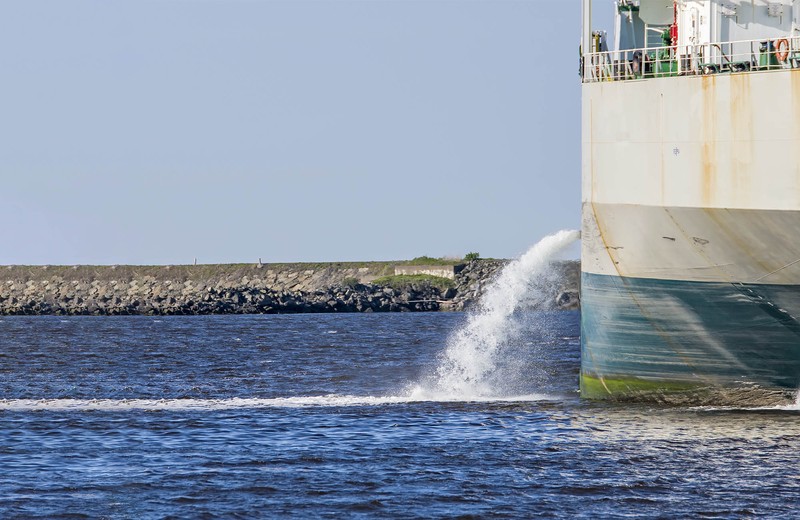
Introduction
Ballast water management is a critical aspect of modern maritime operations. It involves the control and treatment of ballast water to prevent the spread of harmful aquatic organisms and pathogens. This process is crucial in maintaining the health of our marine ecosystems and complying with international maritime regulations.
Ballast Water Treatment System
A ballast water treatment system is a technology designed to remove and inactivate biological organisms from ballast water. These systems are essential for complying with international regulations and protecting marine ecosystems. They work by filtering out solid materials and then disinfecting the water to kill or inactivate any remaining organisms.
One such technology often used in these systems is known as PureBallast. This technology, developed by Alfa Laval, is designed to effectively treat ballast water and reduce the risk of transferring harmful organisms. It uses a combination of mechanical separation and UV irradiation to treat the ballast water, ensuring it is safe to be discharged back into the sea.
Ballast Water Treatment
Ballast water treatment involves several steps, including filtration, disinfection, and control. The goal is to remove or inactivate harmful organisms and ensure the ballast water is safe to discharge. This process is crucial in preventing the spread of invasive species and protecting the biodiversity of our oceans.
- Filtration: The first step in ballast water treatment is filtration. This process involves removing solid particles and larger organisms from the ballast water. It’s the initial line of defense and helps to reduce the load for subsequent treatment steps.
- Disinfection: The second step is disinfection. In this step, the filtered ballast water is treated to kill or inactivate any remaining microorganisms. This can be achieved through various methods such as chemical treatment, ultraviolet (UV) radiation, or deoxygenation.
- Control: The final step is control. This involves monitoring the effectiveness of the treatment process and making necessary adjustments to ensure the treated ballast water meets the required standards before it is discharged.
Compliance with Ballast Water Regulations
Ballast water treatment compliance regulations is not just about following rules – it’s about safeguarding our marine ecosystems for future generations. These regulations, set by international maritime authorities, dictate the maximum amount of living organisms allowed in discharged ballast water. Ships that fail to comply with these regulations can face severe penalties, including fines and detention. Therefore, the use of systems like Alfa Laval BWTS is not just about compliance, but also about corporate responsibility and environmental stewardship.
Ballast Water Regulation
Ballast water regulation is a set of rules and standards established by international maritime organizations. These regulations aim to control the discharge of ballast water and reduce the impact on the marine environment. They require ships to manage their ballast water and sediments to certain standards, according to a ship-specific ballast water management plan. These regulations are enforced through a combination of port state and flag state controls, and they apply to almost all ships that carry ballast water.
Waste Water Treatment
In addition to ballast water treatment, waste water treatment is another crucial aspect of maritime operations. It involves the treatment of waste water generated onboard, ensuring it is safe for discharge into the sea. This includes sewage, gray water, and bilge water. Proper waste water treatment prevents the pollution of the world’s oceans and protects marine life. Alfa Laval also provides solutions for waste water treatment onboard ships, helping the maritime industry meet its environmental responsibilities.
Conclusion
In conclusion, ballast water management is a vital part of maritime operations. Systems like Alfa Laval BWTS and PureBallast are instrumental in ensuring compliance with ballast water regulations. As we strive for a sustainable future, the significance of effective ballast water and waste water treatment is paramount.
The maritime industry’s commitment to environmental stewardship is evident in the rigorous standards for ballast and waste water treatment. These standards safeguard marine ecosystems and uphold the industry’s reputation for responsible operation. The use of advanced systems like Alfa Laval BWTS and PureBallast underscores this commitment, showing that environmental responsibility and operational efficiency can coexist.
Every stakeholder in the maritime industry, from manufacturers to crews to regulatory authorities, plays a role in ensuring compliance with these regulations. By working together, we can ensure the sustainability of our oceans and the continued success of the maritime industry. Let’s aim for a future where our seas teem with life.
